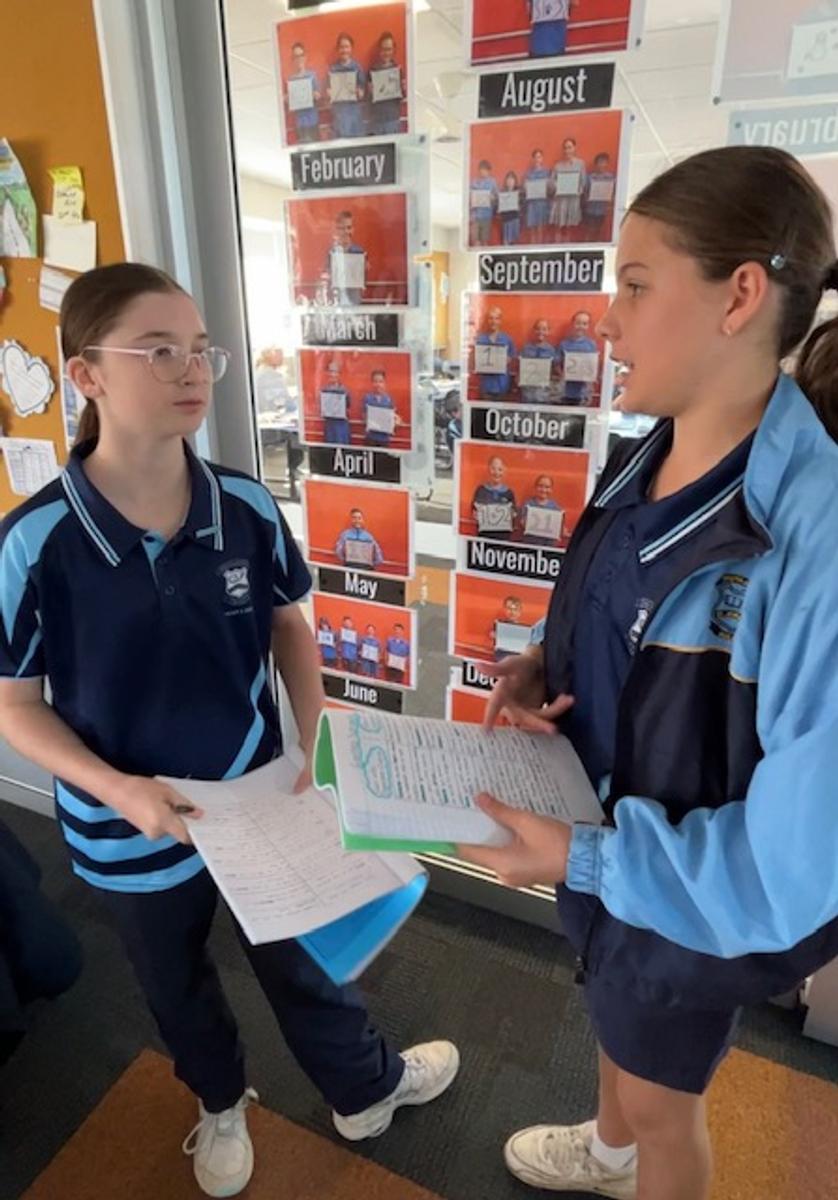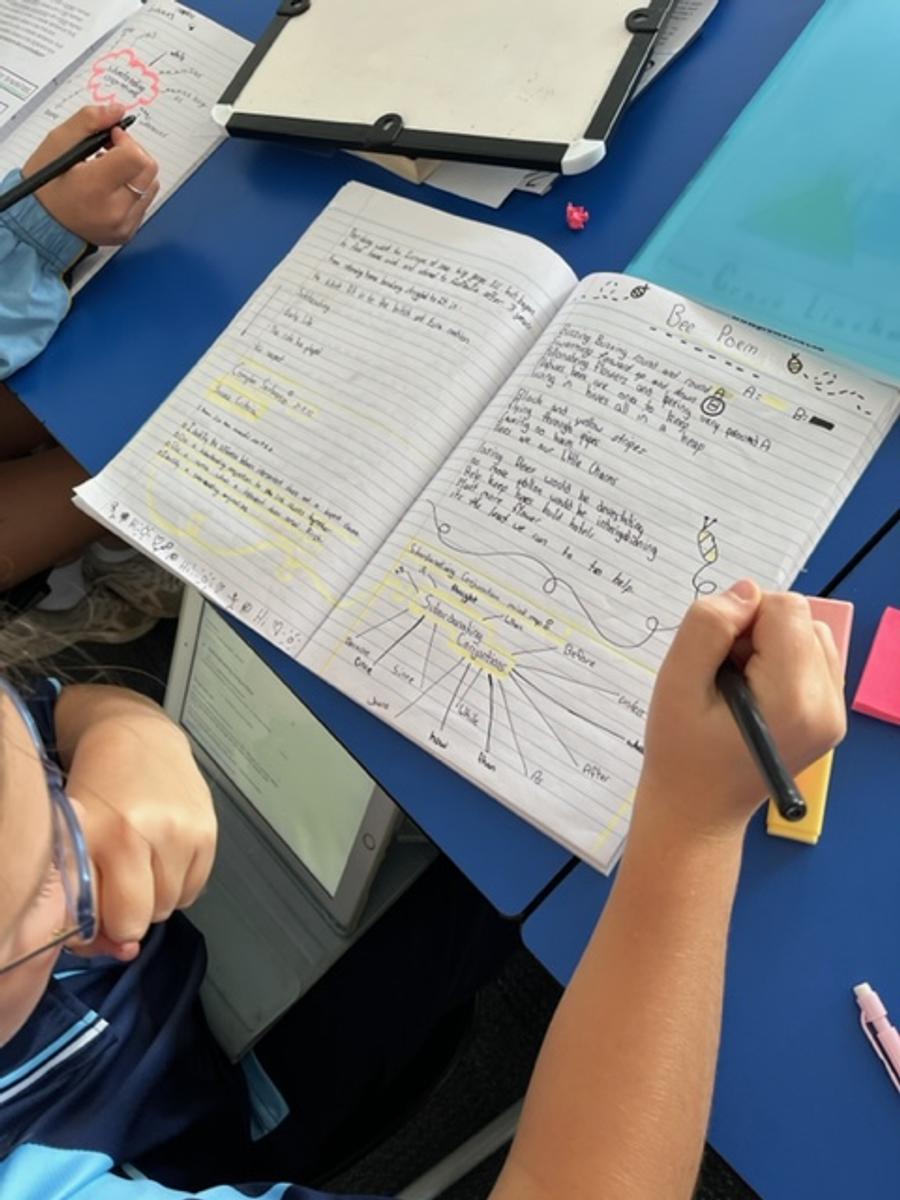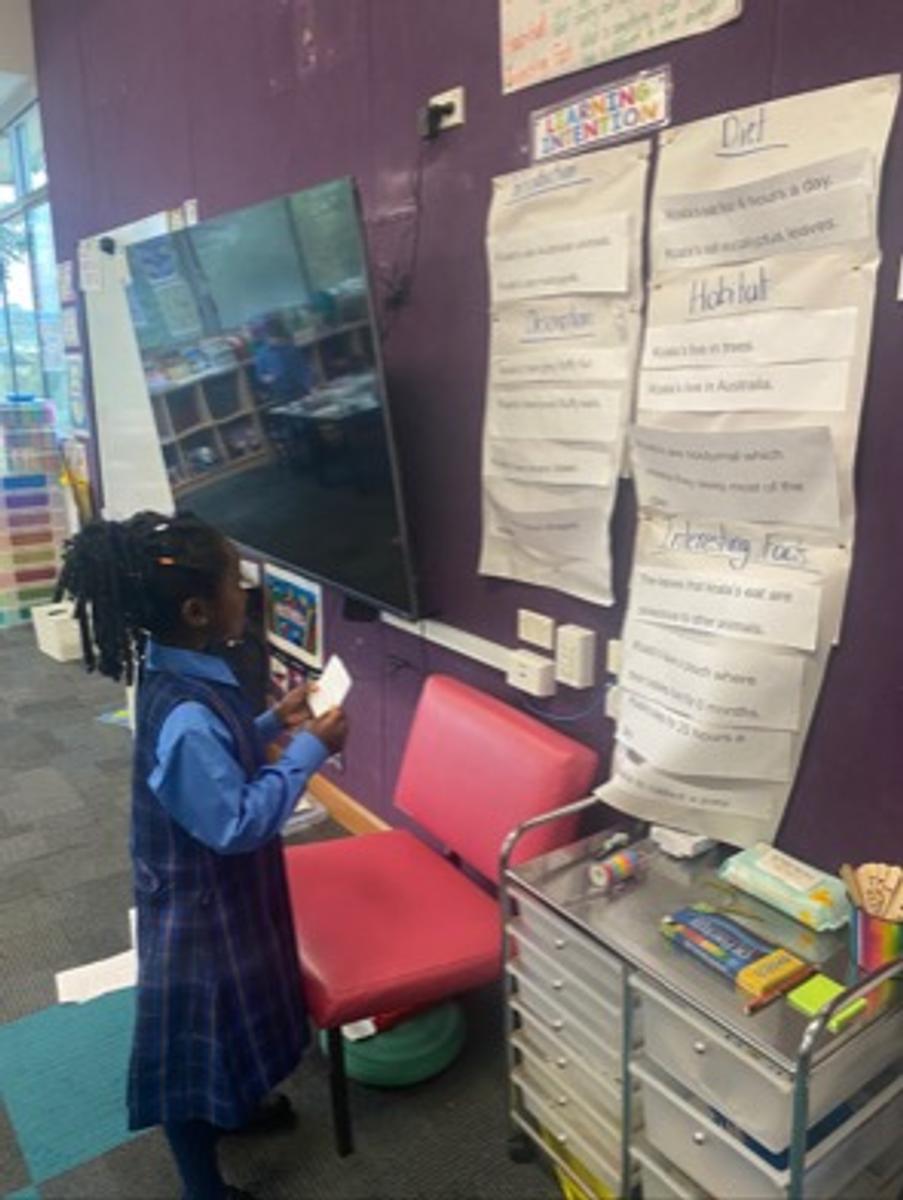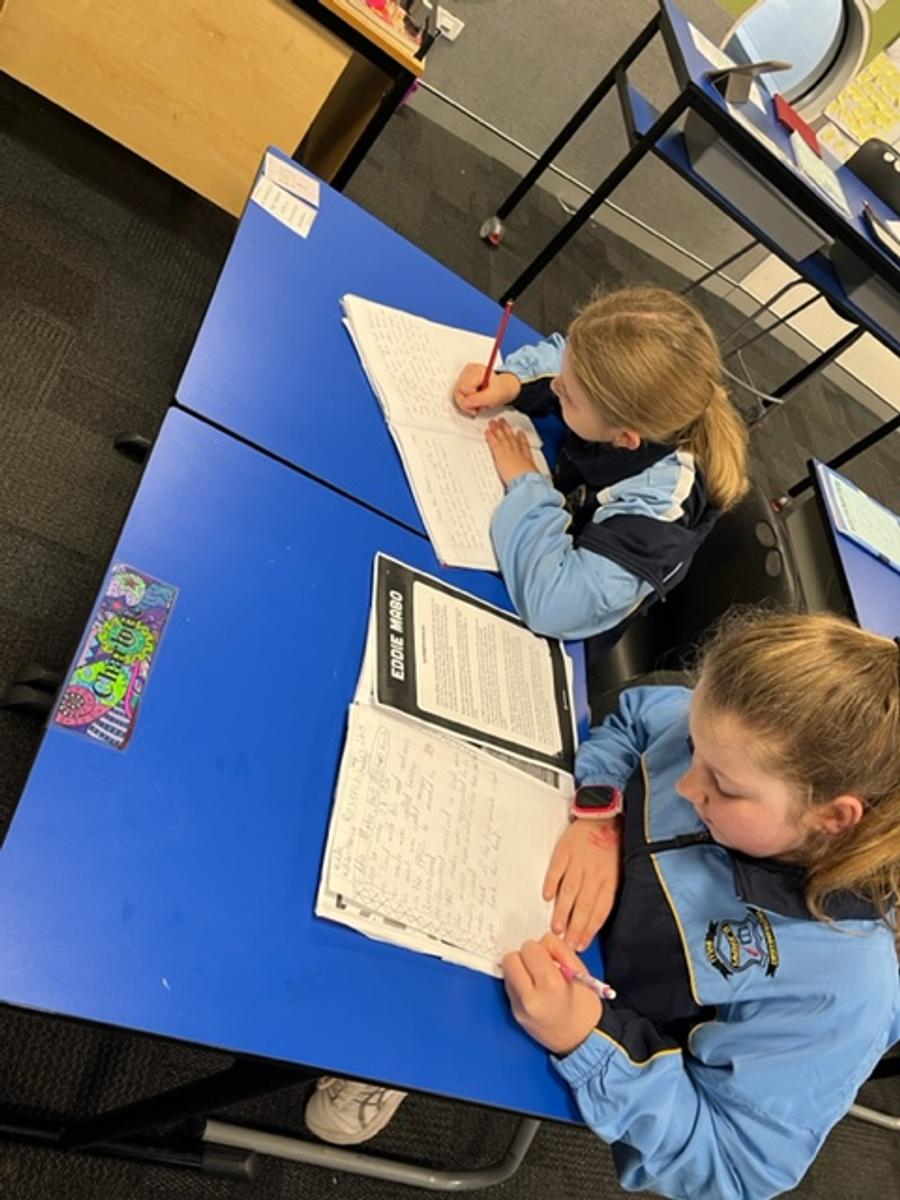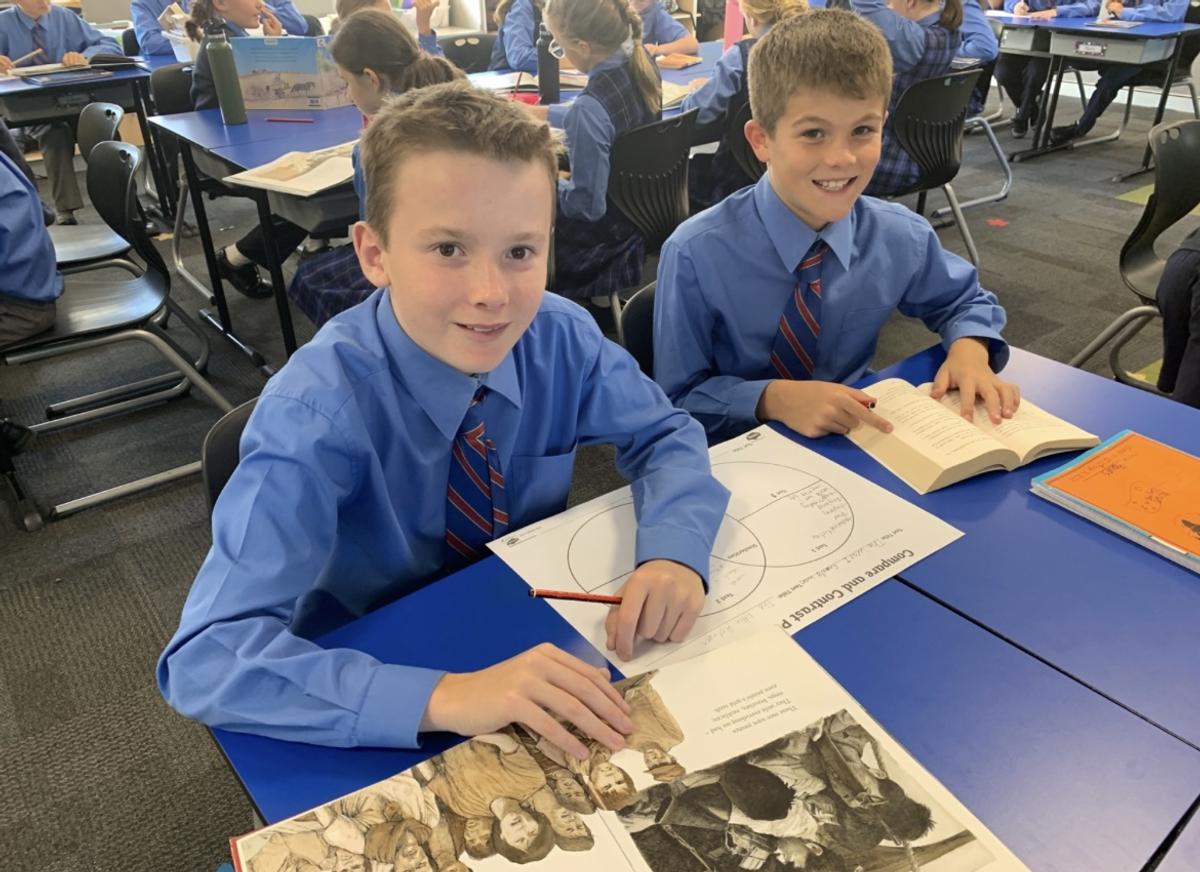Parenting Page

Parental Engagement in Learning to Write
What parents and carers need to know
Children experiment with writing long before they start school. Their early squiggles and drawings are the beginning of writing.
Books provide a powerful model of what writing looks like. Books convey the understanding that squiggles on a page convey a message. Reading and writing with your children helps them to make sense of how written language works.
We learn to write by writing. Children love to write! In classrooms, children are encouraged to select topics that express their ideas and interests. It is difficult to write about unfamiliar topics or topics that are irrelevant to our life experiences. Before writing, talking about a topic is a good place to collect thoughts and ideas.
When children write and freely express their ideas, this
is called draft writing. Children need many opportunities to express their thoughts and ideas in writing without being concerned about the mechanics of writing such as spelling, punctuation and grammar. At this stage, worrying about spelling, punctuation and grammar can hinder their styles, expressions and exploration of words that best communicate their ideas. In fact, this level of response often ‘kills’ off the writer who learns to write less and take fewer risks. Instead, respond to the ideas of the writer – for example, ask: Where did you get your idea? Are you writing a factual text (poem, recipe, chapter book, etc)? What is going to happen next? Read me your lead sentence again because that really had me interested in your story. What is going to happen to your main character?
Editing and Proofreading
If the draft writing is to be shared with a wider audience and has been edited for meaning, the next stage is to proofread for spelling, punctuation and grammatical mistakes. Not all writing needs to be edited. We do not edit our shopping lists, diaries or reminder notes! Children need to be encouraged to write for enjoyment and play with words.
In classrooms, children explore writing as a process from drafts to published pieces. Children are encouraged to write for real purposes and utilise a range of different text types such as recipes, factual texts, notes, report writing, narratives and poetry. They are also taught to consider how to appeal to different audiences.
Handwriting should not be confused with writing. Handwriting is a surface feature of writing and children who are self-conscious of their handwriting benefit from opportunities to write and draw with a variety of pens, textas, paint, magic boards, chalk and ‘fancy’ pencils. When it comes to publishing, children often publish on the computer, use voice to text recognition or publish in a variety of ways such as a poster, alphabet books, dioramas, or chapter books. The form the publishing takes is the best match for the type of story being told.
Work that comes home from school may not have every spelling error corrected, every grammatical mistake rectified or punctuation inserted. It is important to talk with your children about the purpose of the work and what they learned, rather than emphasise the errors. Ask ‘tell me questions’ such as: ‘Tell me about this work …’ ‘Tell me how you did this …’ ‘Tell me what you liked about this activity.’
(PETAA-Primary English Teaching Association- Kaye Lowe)
What parents and carers can do (writing)
- Let your child/ren know how important writing is to you.
- Encourage children to write, write, write! Provide many opportunities such as writing the shopping list, sending letters and cards to friends and relations, writing emails, keeping a diary, publishing personal stories, labelling photos in the family album, and leaving notes. Locating writing aps such as Book Creator. Writing should be relevant and meaningful rather than writing for the sake of writing.
- Give children opportunities to read their stories aloud (while you sit back and listen). Listen with a focus on the message they express. Comment on what they have done well, for example: ‘I enjoyed how you used interesting words such as X, Y, Z.’ ‘The character you created seems so real. I can imagine how he looks.’ Leave comments about spelling, punctuation, and grammar to another time — they are important if and when it is to be published.
- Draw children’s attention to how writing is presented, for example, on brochures, billboards, books, and electronic media — these are models of writing for real purposes.
- Create a community of writers. Provide a quiet place for writing with lots of writing materials. Leave notes for each other, write poems for your children, and send messages in lunch containers. Play writing games, for example, one person writes the beginning, another the middle and the other the end of a family story. Write together. Make sure to use capital letters and full stops.
More practical ideas...
- Talk around the dinner table about what writing everyone in the family did during the day.
- Share and show them the kinds of writing you do and why.
- Let your child see you writing either digitally or by hand. Make sure they see that you always write the first draft and then edit it to use better words or fix grammar. Let them know that you then check your spelling and punctuation.
- Show them some of the writing others send to you- perhaps letters posted from the local council, the bank, election information posted to you, emails you receive from work or friends.
- Write to your child. This could be short written messages, letters, text messages, or reminder notes so that they can see how valuable writing can be.
- Let your child write to family members and post those letters.
- It is great fun for children to receive letters too- perhaps from grandparents, aunties or uncles, even older siblings.

